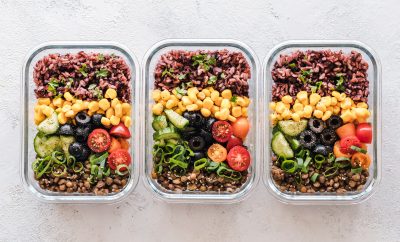
Dining
Make Salad Healthy Again
Sometimes, eating a salad doesn’t equal eating clean. When you order a salad at a restaurant, you may feel like you’re doing your body a favor, but that’s not always the case. How do you know you’re making the right choice? Here’s a few things to look out for when you’re ordering “greens”:
What is the dressing made out of? The dressing is usually really tasty when you order a salad from a menu at your favorite place to eat, but more often than not, the dressing is made from unhealthy ingredients and serving size is not considered. Dressings can contain a lot of sodium (even if you opt for a low fat dressing, these often have a much higher sodium level than regular options). Opt for a vinaigrette as opposed to a creamy dressing like ranch , caesar or thousand island dressing.
Another thing to consider when you’re perusing through the salad section of a restaurant’s menu: What’s the protein? If the salad is topped with “crispy” (i.e. deep fried) chicken, this is enough to totally negate all of the greens and veggies you’re eating. Always make sure the protein included with your salad is cooked in a healthy manner.
With a few modifications, any salad can make a healthy meal. The easiest way to keep it healthy – make your salad at home. When you make a salad at home, there are a few things to keep in mind. First, you have to start with the four key ingredients to make any bowl o’ greens delicious and nutritions: greens, protein, veggies or fruit, and dressing. Then, there are the bonus points: grains, crunch, and other extras.
Start by making sure you choose a base for your salad that provides important nutrients like folic acid and lutein. Baby spinach or a spring mix will include a variety of dark green lettuces. These greens are typically 20 calories per two cups, and they are also tasty and nutrient-rich. It’s also important that you add fresh vegetables to your salad (at 25 calories or less per 1/2-cup serving you can’t go wrong). Choose a variety of colors to get the most health benefits (and beauty) — red bell peppers, broccoli, carrots, cucumbers, and red onions are all great choices. And they’ll add lots of flavor and crunch! Be sure to stick with raw or lightly steamed vegetables and steer clear of ones that are fried or swimming in oil.
The key to any healthy salad is a good dressing. Not only does fat help absorb nutrients in the veggies, but a nice dressing will help you feel full and satisfied long after your meal. Remember: Less is more. There are a lot of people out there who will only consider eating a salad if it’s smothered in a rich, creamy dressing. Unfortunately, dressing can take a salad from fresh and nutritious to downright unhealthy. One tablespoon of your average vinaigrette is about 80 calories and one tablespoon of creamy ranch is almost 100 calories. Some alternatives to these dressings are salsa (add some spice to your salad) or even avocado. For a tasty dressing, combine lemon, olive oil, apple cider vinegar, salt and pepper to make an easy substitute for all those bad-for-you dressings.





0 comments